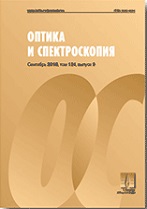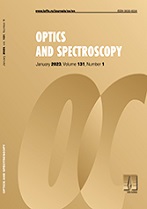|
This article is cited in 3 scientific papers (total in 3 papers)
Applied optics
Optical detection of immune complexes using colloidal gold nanoparticles
A. N. Spitsyna, D. V. Utkina, M. N. Kireeva, N. A. Sharapovaa, P. S. Erokhina, V. G. Germanchuka, V. I. Kochubeybc
a Russian Antiplague Research Institute Microbe, 410005, Saratov, Russia
b Chernyshevsky Saratov National Research State University, 410012, Saratov, Russia
c National Research Tomsk State University, 634050, Tomsk, Russia
Abstract:
The possibility of detecting the formation of immune complexes with the use of antibodies labeled with colloidal gold nanoparticles and optical spectroscopy is considered. Changes in the spectral characteristics of sols of gold nanoparticles with diameters of 15, 60, and 90 nm conjugated with immunoglobulins in the presence of especially dangerous infectious agents are recorded and analyzed. The data obtained indicate that the developed methodological approach to optical detection of immune complexes may be promising for creating immunochemical methods of identification of infectious agents.
Received: 10.07.2018
Citation:
A. N. Spitsyn, D. V. Utkin, M. N. Kireev, N. A. Sharapova, P. S. Erokhin, V. G. Germanchuk, V. I. Kochubey, “Optical detection of immune complexes using colloidal gold nanoparticles”, Optics and Spectroscopy, 125:5 (2018), 716–720; Optics and Spectroscopy, 125:5 (2018), 810–814
Linking options:
https://www.mathnet.ru/eng/os872 https://www.mathnet.ru/eng/os/v125/i5/p716
|


| Statistics & downloads: |
| Abstract page: | 65 | | Full-text PDF : | 14 |
|





 Contact us:
Contact us: Terms of Use
Terms of Use
 Registration to the website
Registration to the website Logotypes
Logotypes








 Citation in format
Citation in format 
